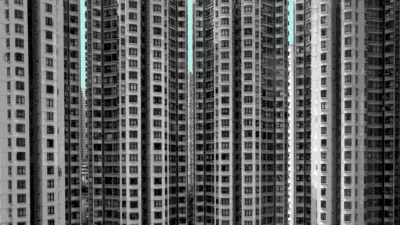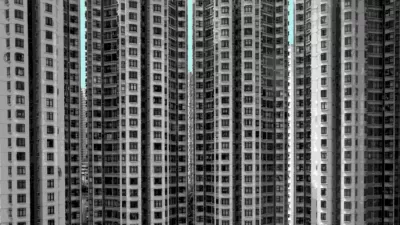A versatile building material with a long pedigree, concrete also has associations with ugliness and totalitarianism. Its reinforced variety, widely used today, can conceal a costly flaw.

From ancient Rome to modern China, concrete is one of humanity's favorite building materials. Tim Harford looks at concrete's history and how we view it. "Architecturally, concrete implies lazy, soulless structures: ugly office blocks for provincial bureaucrats; multistory parking garages with stairwells that smell of urine. Yet it can also be shaped into forms that many people find beautiful—think of the Sydney Opera House, or Oscar Niemeyer's cathedral in Brasilia."
Concrete is versatile, but it isn't easily repurposed. "That's the fundamental contradiction of concrete: incredibly flexible while you're making something, utterly inflexible once it's made." It's also long-lasting, and will outlive materials like wood and metal.
But that's not necessarily the case for all buildings constructed from concrete. Harford writes, "Reinforced concrete is much stronger and more practical than the unreinforced stuff. It can span larger gaps, allowing concrete to soar in the form of bridges and skyscrapers. But here’s the problem: if cheaply made, it will rot from the inside as water gradually seeps in through tiny cracks in the concrete and rusts the steel."
There are methods to prevent that decay, but it's already causing problems in the U.S., and will soon cause issues in China's "concrete forests" of high-rise housing. Harford suggests that perhaps concrete is best used where it can immediately improve needy people's lives, and gives us several examples.
FULL STORY: How Concrete Cemented Its Place in History

Maui's Vacation Rental Debate Turns Ugly
Verbal attacks, misinformation campaigns and fistfights plague a high-stakes debate to convert thousands of vacation rentals into long-term housing.

Planetizen Federal Action Tracker
A weekly monitor of how Trump’s orders and actions are impacting planners and planning in America.

In Urban Planning, AI Prompting Could be the New Design Thinking
Creativity has long been key to great urban design. What if we see AI as our new creative partner?

San Francisco Mayor Backtracks on Homelessness Goal
Mayor Dan Lurie ran on a promise to build 1,500 additional shelter beds in the city, complete with supportive services. Now, his office says they are “shifting strategy” to focus on prevention and mental health treatment.

How Trump's HUD Budget Proposal Would Harm Homelessness Response
Experts say the change to the HUD budget would make it more difficult to identify people who are homeless and connect them with services, and to prevent homelessness.

The Vast Potential of the Right-of-Way
One writer argues that the space between two building faces is the most important element of the built environment.
Urban Design for Planners 1: Software Tools
This six-course series explores essential urban design concepts using open source software and equips planners with the tools they need to participate fully in the urban design process.
Planning for Universal Design
Learn the tools for implementing Universal Design in planning regulations.
Gallatin County Department of Planning & Community Development
Heyer Gruel & Associates PA
JM Goldson LLC
Mpact (founded as Rail~Volution)
City of Camden Redevelopment Agency
City of Astoria
Jefferson Parish Government
Camden Redevelopment Agency
City of Claremont




























